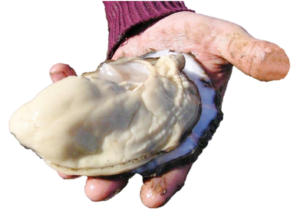
Oyster farming can be quite a lucrative venture, and following the trends or knowing the happenings in the sector can guide you in key areas and regions to invest in, while avoiding mistakes.
We’ve done the hard work, and have put together the current trends in oyster farming to aid you. Keep reading.
What is Oyster Farming?
Oyster farming is a part of aquaculture that deals with breeding and raising oysters for essential parts. These parts include shells, internal organs, tissue, and other mineral components.
Oysters make a rich meal, and their farming is steadily progressing in Australia. Its shells are an excellent component for necklaces and other ceramic designs.
They’re rich in vitamin D, calcium carbonate, and other nutritional supplements that prevent bone loss, boost mental health and fight bacterial contaminations.
Benefits of Oyster Farming
Oysters have multi-talented marine features with great tricks in their calcareous sleeves. One of them being how their filter-feeding enhances nutrient cycling and water quality.
They also offer security for small invertebrates and young fish, while reducing coastal erosion and soaking carbons.
Generally, Oyster farming gives a lot of economic benefits. Here are other advantages of oysters:
- With Oysters, you can filter pollutants while regulating minerals such as phosphorus and nitrogen from overtaking waterways.
- They help coastal ecosystems in several diverse ways like sheltering other animals and cleaning the water.
- Oysters as a natural solution to water pollution can filter particles and algae from 190 liters of water daily. This means that an oyster farm of 1 million oysters could filter 3.785 billion liters of water daily.
- Also, oysters can colonize their close areas, and can aid in establishing and supplementing many wild oyster populations.
- In terms of health, oysters, like many seafood, are low in calories and high in protein. They’re a great source of copper, selenium, vitamin B12, and iron.
Current Trends in Oyster Farming

The number of oyster farms has been growing quickly. At present, there are more than 3000 in North America alone.
The West Coast has the majority with Washington topping the states with about 80% of bivalve production.
It’s estimated that the United States oyster farming sector garners more than 19,000 indirect and direct jobs and an economic influence of about $2 billion in 2021.
The rapid growth in Oyster farming goes beyond North America to countries like Australia, Europe, the Philippines, Latin America, China, and Japan.
What’s more, the UN report in 2018 concluded that though shellfish production is increasing, it hasn’t met world demand. This has created an increase in the prices in major markets globally.
Aside from its demand, Oyster and shellfish farming can be a worthwhile business venture as they don’t need agricultural inputs like fertilizer and feed.
Specifically, Oyster farming Australia and New Zealand are making the rounds in innovative aquaculture systems, especially compared to their US and French counterparts.
A lot of them have been recognized at both local, national and global levels because their contributions to making farmers grow with the tide are pretty impressive, and a plus to everyone in the Oyster farming business.
These innovations redefine Oyster farming for farmers, helping with upgrades on oyster farming equipment techniques, easing the workforce, and skyrocketing the quality of shellfish products.
When it comes to oyster farming, you have to mention Hexcyl Systems, an Australian-based oyster farming baskets supplier.
Hexcyl Systems has a lineup of products which include Hexcyl basket, Clips, Accessories, Adjustable Longline System, Brochures, Reports, and Performance testing.
The company knows what every oyster farmer needs with over 60 years of experience and knowledge of certain shellfish practices. They are also an oyster farming cages supplier.
It has distributors in Japan, Australia, New Zealand, Canada, France, the United States of America, Portugal, South Korea.
Frequently Asked Questions on the Current Trends in Oyster Farming
- What’s the projected growth rate of the world oyster market from 2022 to 2026?
The world oyster market is expected to grow about 5% from 2022 to 2026. - What major factors are driving the world oyster market?
The increase in seafood trade activities and the rising inter-continental food trends mostly drive the global oyster market. - What’s the world oyster market break-up according to the oyster type?
According to the oyster type, the world oyster market could be divided into Pacific Cupped Oyster, Cupped Oyster, American Cupped Oyster, and Penguin Wing Oyster.
Presently, Pacific Cupped Oyster has the most total market share. - What’s the world oyster market break-up according to the end-user?
For the end-user, the world oyster market is divided into retail and food service. Presently, the retail sector has market dominance. - What’s the world oyster market break-up according to the packaging form?
In the packaging form, the world oyster market is split into frozen, fresh, and canned. In these, fresh packaging has the most global market share. - What have been the important regions in the world oyster market?
The key regions include Asia Pacific, North America, Latin America, the Middle East, and Europe.
Presently, Asia Pacific dominates the world market.
Conclusion
The current trends show an increase in productivity and efficiency through technologically enhanced farming.
It’s no wonder that demands for unique baskets, adjustable long-line farming systems, and other products that boost oyster farming aquaculture are increasing.
Meanwhile, if you want full-time productivity in oyster farming designed to fit in with global systems, Hexcyl Systems provide entirely safe methods to mitigate different environments.
For better productivity, contact Hexcyl Systems for your oyster baskets and other oyster farming equipment today!
